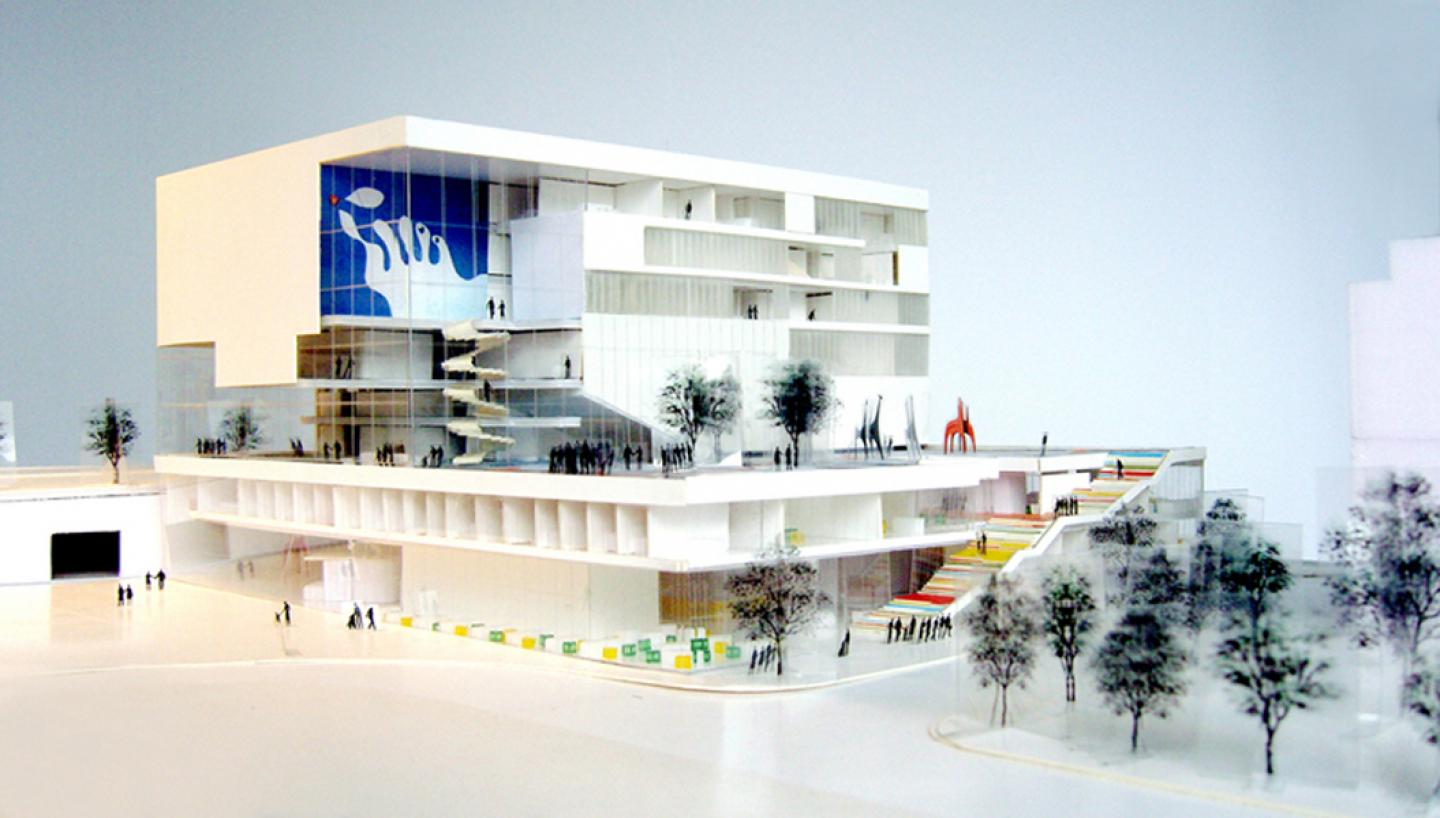House of Arts and Culture, Beirut
After studying the brief of the competition, it was a surprise not to encounter the word Icon once. The brief talks about a strong presence, a recognisable character, an exceptional architecture …but also about banning words such as: rigidity, routine, or static. The current architecture production of icons has resulted in rigid and static buildings that somehow quickly became part of the routine.
The architecture of The House should not impose, restrict, limit, or confine any potential of creativity. It should allow maximum flexibility, a vibrant image, and it should represent the dynamism of Art and Culture in Beirut day after day.
Let’s escape from the conventional icon, from the megalomaniac frozen gesture, and reinvent the way a city and its culture are represented! The House of Arts and Culture cannot be a static depiction of a single moment in time. It must be dynamic, changeable; like a machine, it should reveal the essence of transformation.
Horizontal and Vertical: “The Magic Box and the Active Plinth”
The programme is grouped according to its qualities. By dividing the functions into two categories according to their requirements on height and street interaction, we obtain two volumes: a tall box and a low plinth. By keeping the plinth as low as possible, we ensure maximum urban conditions, both in the surroundings and within the plinth itself. We obtain a Magic Box and an Active Plinth.
The Box is magic because it can host hundreds of different event configurations (Italian, kabuki, No theatre, techno party, mega banquet, exhibitions, conferences, lectures, dance evenings, poetry recitals, fashion shows, concerts, markets, fairs…). The Plinth is active because it hosts all the programmes on two levels, connected physically and visually, allowing for the maximum interaction between the functions on the inside and the maximum connection with the urban on the outside. By concentrating the entire plinth programme on two levels, we minimize the use of the elevator so functions can be continued without interruptions.
The back of the magic box presents a large billboard that might announce the activities of the house, or act as a screen for a projected movie, or be rented for advertisements on certain occasions to generate extra funding…. It will also provide protection from the noise of the road and from southern radiation.
The top of the plinth becomes an elevated plaza for the visitors of the museum and for pedestrians. At a different level than the street (10 m higher), this Plaza becomes a podium for concerts, a platform for exhibitions… a lively space. As it is situated to the North, it will also be pleasant in summer.
The fact that above this 10m plaza, just 50% of the site is occupied will help to liberate a bit of space in the very compact future situation of the area.
Extending, annexing, adding, attaching, including…it is all possible.
In order to avoid mono-functional spaces, the distribution of the programme is such that one programme may be extended into the next. For example, the performance halls and the meeting rooms are placed together so that on certain occasions they can combine to host larger events in a spectacular configuration. In the warm months, such events could even be continued onto the elevated Plaza.
2009
Location: Beirut, Lebanon
Site: City Center
Program: Museum, Theatre, Exhibition, Library, Offices, Commercial space, Documentation Centre, 200 Parking lots
Surface: Site Area 3800 m², Gross Floor Area 16000 m²
Status: -
Client: Ministry of Culture, Lebanon
Budget: $20 Mill.
Awards: SECOND PRIZE










